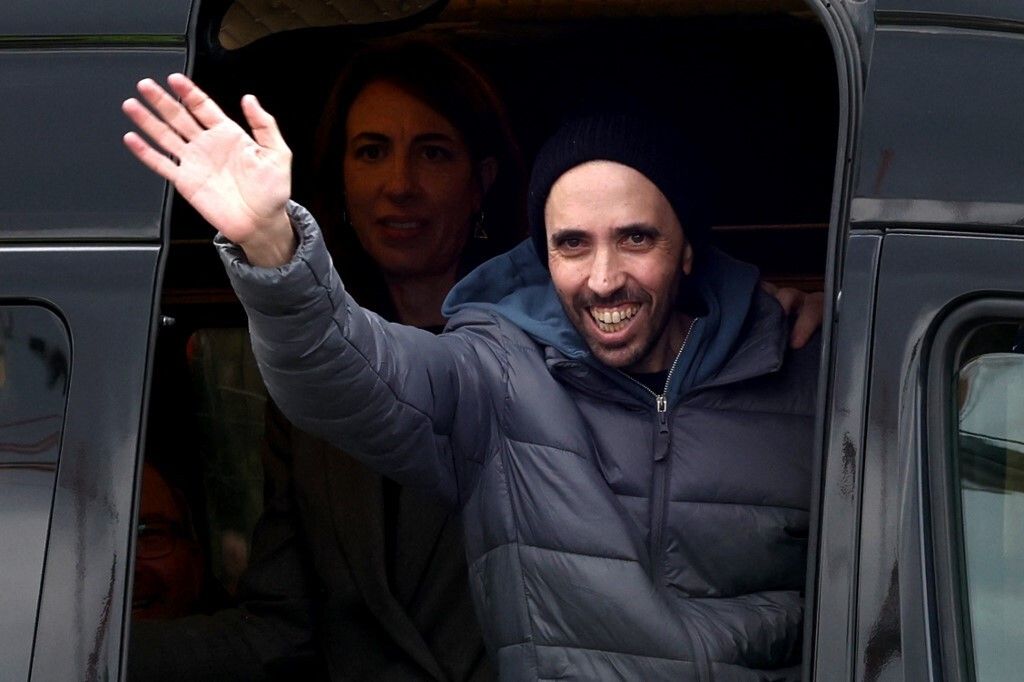NepalIsrael.com auto goggle feed
Survivor Tal Shoham shared the story of his captivity in the Gaza Strip with the Associated Press on Thursday, detailing his capture and torment by terrorists.
Shoham recounted that he felt “many times that I separated from life and … tried to accept death. There are so many ways to die there.”
About half of his time in captivity was spend in apartments above ground and about half in tunnels. Shoham discovered at one point that his wife and children, who were released in the first hostage release deal after 50 days in captivity, were still alive. He received a letter from his wife, Adi, who explained that she was to be released along with their children, Neve and Yael.
Shoham learned that, before she was released, a Hamas terrorist told her that if she spoke about the torture and torment she underwent while a hostage, they would kill him. When she spoke about her personal experience, there were details she was not willing to discuss, for fear of endangering the remaining hostages.
Shoham was released after 505 days, in February, during a hostage exchange deal for Palestinian security prisoners.
While being taken captive, he was unable to reassure his son that they would survive. “I didn’t want him to hear a lie from me, if it’s the last minutes of our life,” Shoham said.
After being taken into Gaza, one of the armed men jumped on the roof of the car, aimed his weapon at him and told him to kneel. Tal refused. He said, he didn’t want to be killed on their terms, even though the terrorist had “murder in his eyes.”
At first, Tal was taken to an apartment, which according to the terrorists who held him was located in the north of Gaza, where he was tied and locked in a room for about a month. He was then moved to another apartment where he met Evyatar David and Guy Gilboa-Dalal, who were kidnapped from the Nova Festival, and with whom he spent most of his captivity. The conditions of their captivity, according to those they met, were harsher than what he had gone through. They were held with painful handcuffs and nylon bags on their heads, and ate one pita a day.
The three of them lived together in the same apartment for several months. They were beaten by their captors daily, suffering humiliation and provocation. To mock Gia and Abitar, their captors would ask them how does a music festival sound? They would then imitate the sounds of gunfire. After being forbidden to speak, they learned to recognize each other through whispers.
To ease his captivity and reduce the chance that he would be killed, Tal tried to humanize himself in the eyes of his captors. He learned Arabic and talked to them about his life. One of the guards liked massages, so he and the other captives would give him a daily back massage in exchange for an improvement in their food supply, which brought them tuna, sardines, and even eggs.
Last June, the three detainees were transferred to a tunnel, which was estimated to be about 30 meters underground. This happened after “Operation Arnon,” in which Noa Argamani, Almog Meir Jan, Andrei Kozlov, and Shlomi Ziv were freed in a daring mission. The tunnels were dark and humid, and it was hard to breathe, said Tal, who returned. There they met Omar Wenkert, who had been in the tunnels for a longer period.
They shared a cell that 12 meters long and slept on mattresses on the ground, a meter away from the hole that was their toilet. They showered about once every 21 days. What helped him survive, he said, was focusing on what he could control. Shoham started doing mindfulness exercises he learned from his wife, and talked with the abductees about feelings. “The only thing that I have power upon is my inner life,” he said. He told himself every day that eventually he would be free.
Shoham spoke about the urgency to release the hostages, specifically David and Gilboa-Dalal. “I really fear that if they won’t be released soon, they probably will die there,” he said.
Although his leg has not yet fully recovered, Tal says he is one of the lucky ones, as he does not suffer from nightmares. He gives credit to his children who have helped him to move forward.
“When I can hear my children addressing us, like mother and father, mom and dad, saying both names, it’s like music to the ears,” he added. “As a family, we’re all in the process of recovery now. But we are doing it together.”
The post”Tal Shoham Shares Story Of Gazan Captivity, Torment By Terrorists” is auto generated by Nepalisrael.com’s Auto feed for the information purpose. [/gpt3]




